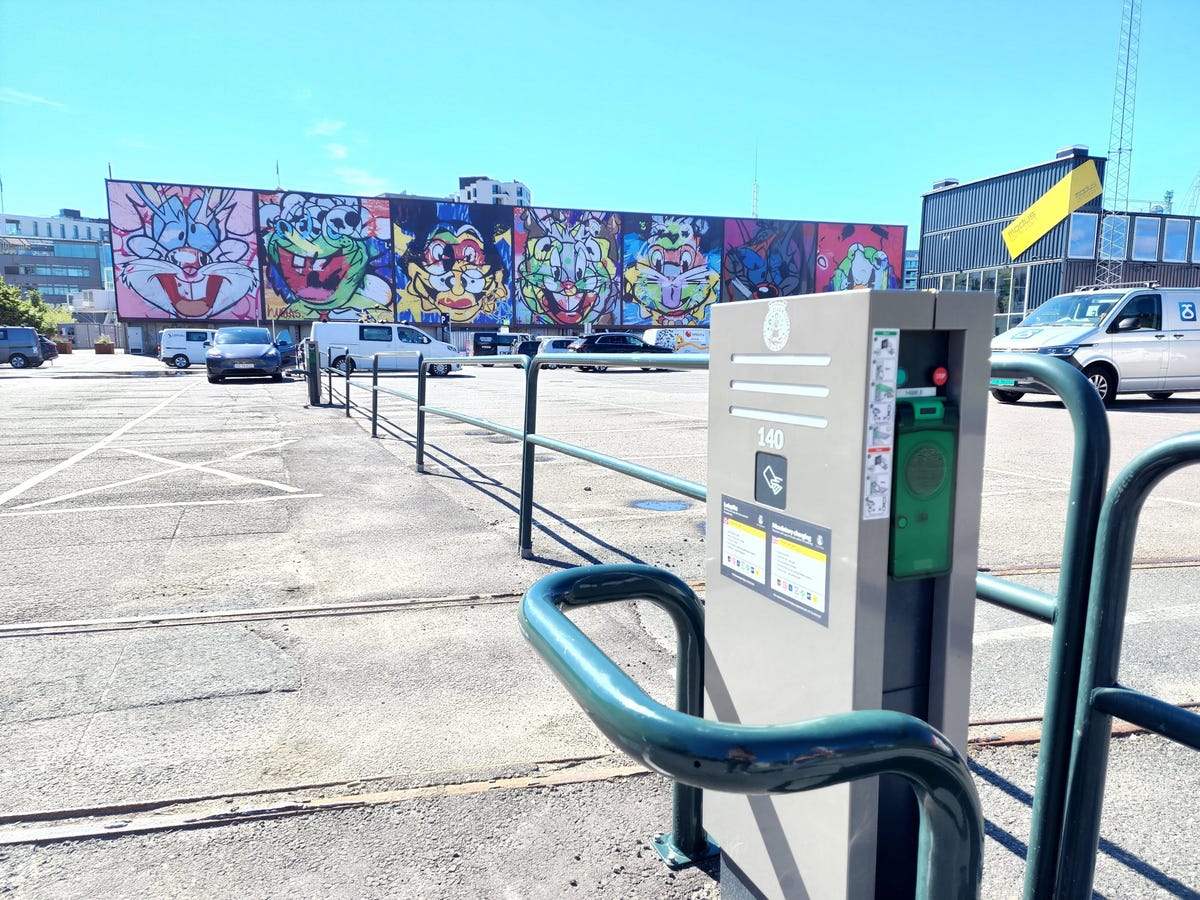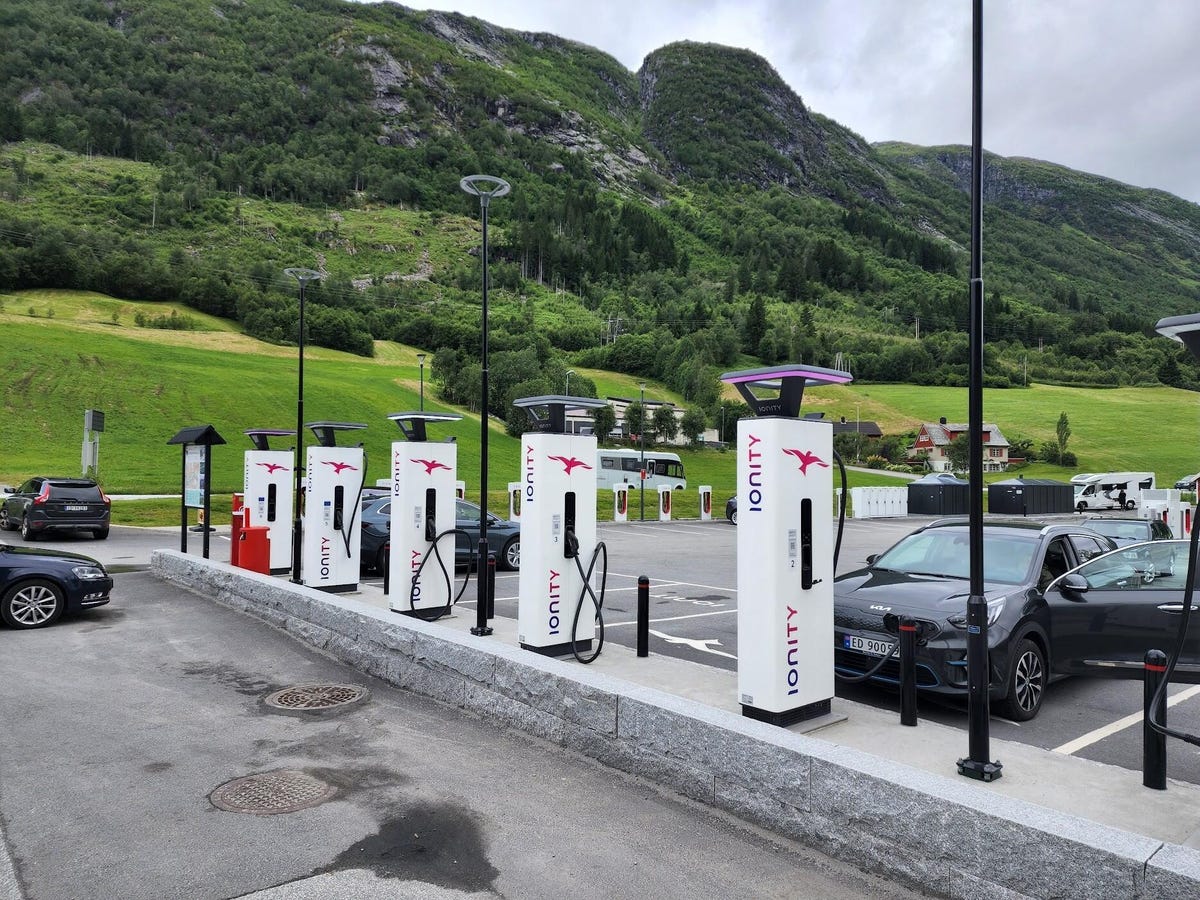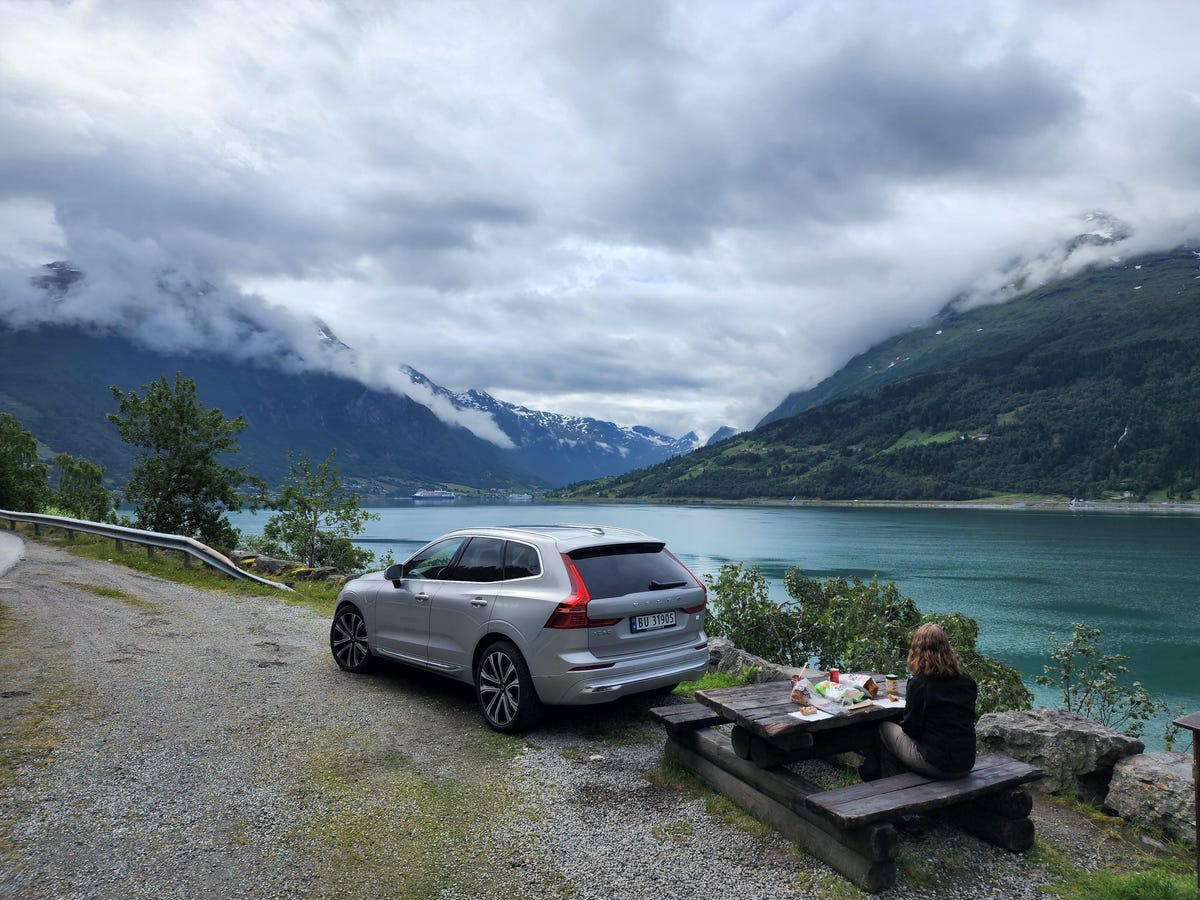Looking Into Our EV Future On The Roads Of Norway

Looking Into Our EV Future on the Roads of Norway
Traveling through Scandinavia feels like visiting the future in a lot of ways. OK, it's a future with a lot more open space and a lot less cultural diversity than what the real future holds, but a spin through Norway is a pretty interesting trip just the same. Wandering around Oslo, you're struck by stunning architecture at every turn and statues that not only highlight public squares but sprout from the very sea in unexpected spots.
But, being a transportation nerd, it was the means of mobility that really struck me. For one thing, bikes and cars and scooters all seem to coexist in Oslo more peacefully than just about anywhere else on the planet. Buses are easy to ride, with tickets purchased from your phone in an instant avoiding any awkward exchanges with drivers.
And then there are the EVs. So. Many. EVs. An amazing number of the things festoon the roads in Norway, enough to constantly surprise and delight me, despite this being my third trip to the city. Even in just the past few years, battery-powered motoring in Norway has really gone mainstream.
How mainstream? In March this year, 16,238 passenger cars were registered in Norway. Of those, 13,983 were battery-electric vehicles. That's an amazing 86% of all cars registered that month. Meanwhile in the US, according to the Argonne National Laboratory, sales of light-duty vehicles with plugs (including hybrids) made up just 5.85% of the market in March. That was nearly a 40% increase over the previous year, but still floundering in the single digits.
Why the disparity? Is Norway just a utopia of forward-thinking EV zealots? Not exactly. Where state and federal governments in the US have engaged in a haphazard collection of half-assed, confusing incentives to spur EV adoption, scattering a middling collection of carrots here and there over the years, the Norwegian government has instead chosen the biggest of sticks: taxes. Want to buy a gas-powered machine? Be prepared for a painful whack.

Plenty of chargers and some epic art to boot.
Tim Stevens/CNETNorwegians are expected to pay a 25% value-added tax, or VAT, on every purchase. This includes cars, which are also traditionally subjected to other import taxes and the like. I say "traditionally" because EVs have been exempt from those taxes for decades. How does this shake out? Well, let's take a BMW 320d sedan, with a 190-horsepower diesel engine. Per BMW's Norwegian site, that car costs 418,531 kroner without options, or $43,258. However, to actually take that car home, you're looking at a whopping 677,307 kroner after taxes, or $70,005.
Compare that to the BMW i4 M50, a far peppier and frankly nicer to drive machine with 536 hp. It starts at 600,220 kroner, or $62,037. And that's it, that's your out-the-door price. $8,000 saved for a far more engaging car -- and that's before we factor in the upwards of $8 per gallon Norwegians are paying for gas. Mind, they do pay more for electricity, too.
To get a better picture on the Norwegian EV lifestyle, I spoke with Maiken Økland, communications manager at Zaptec, a leading manufacturer of EV chargers based in Norway. Økland told me that the average Norwegian pays 1.88 kroner per kilowatt-hour, or about 20 cents. That's substantially higher than the roughly 14 cents Americans spend and a subject of "extensive political discussions," Økland said. "Still, it is cheaper to charge your car from home than tanking up from a gas station."
But what about charging on the road? How has Norway's infrastructure scaled up to handle this massive influx of plug-hungry cars? To sample the networks I headed out on a trip that would take me from Norway's east coast to its western shore, stopping at EV chargers all along the way to see whether the country's infrastructure was coping.
After initially planning to make this journey in an EV myself, I instead decided to hedge my bets and go with a plug-in hybrid. I wanted to keep things as local as I could, and so the choice was easy. Volvo kindly lent me an XC60 Recharge for the trip. It proved the perfect companion: Big enough to be comfortable yet just small enough to fit into Norway's dinky parking spots. It offers about 35 miles of range on a charge and has a plug so that it could sample Level 2 chargers, but for the many days covering big miles a big fuel tank meant an anxiety-free trip. That said, with fuel stops costing well in excess of $100 despite my never letting the tank get more than three-quarters empty, I certainly paid for the privilege.

The Trollstigen: Not just an epic road, but a great place to regenerate some range.
Tim Stevens/CNETHaving some sort of electrified car, whether PHEV or full-on EV, also proved quite a boon given the tempestuous nature of Norway's highways and byways. On the short, steep, twisting descent down Norway's famous Trollstigen, or "Troll's Road," for example, instead of over-revving my engine or smoking my brakes, the regeneration on the XC60 gained me about 8 miles' worth of emissions-free motoring.
Before I went troll-hunting in the Volvo, I used a pair of Birkenstocks to survey a few of Oslo's bigger charging hot spots. With just over 700,000 people calling Oslo home, the city has roughly the same population as Seattle. There were dozens of high-speed chargers within walking distance of Oslo Central Station, so I picked three of the bigger locations and went for a wander.
Despite losing count of the number of fresh EVs I saw driving around, including things as rare as hen's teeth here in the US, like the BMW iX and even a Ford F-150 Lightning, all of the chargers I visited had plenty of capacity. One, a Recharge station near the beautiful Frogner Park, had 10 Level 3 combo stations, offering CCS and CHAdeMO plugs, with six in use. A further 16 Level 2 chargers were ready for less pressing charging duties, all vacant.
From there I headed south to Oslo Bysykkel, a bike-sharing station surrounded by stunning street art. Here, another eight combo Level 3 chargers offered speeds up to 150 kilowatts and about half were available, with another dozen Level 2 chargers. Only a few of them were occupied by stray Teslas, grabbing a few miles of range while their owners presumably strolled along the boardwalk.
Intrigued, I hopped in the Volvo and headed out of town to properly begin my Norway adventure. Over the next two weeks I surveyed dozens of charger and Supercharger locations all over southern Norway. Here are my anecdotal learnings.

Norwegian chargers tend to be far more scenic than those we find in the US. Far more expensive, though, too.
Tim Stevens/CNETLocation
The vast majority of chargers I saw were either next door to large filling stations or situated in parking lots of shopping plazas. So, not too dissimilar to what we see here in the US. Interestingly, though, Superchargers were often directly adjacent to chargers from other networks like Recharge or Ionity. In the US, it's rare to see the networks co-mingling like this, but then again Norway was one of the first countries added to the non-Tesla Supercharger pilot, so perhaps location-sharing like this should come as no surprise.
Availability and reliability
Long story short, I never saw a charging destination that was at capacity. One was close, a combination Supercharger and Eviny charging station in Lillehammer. Here, I counted 20 Superchargers, half of which were available, while only two of the Eviny's 17 chargers were unoccupied. However, despite the hustle and bustle, there were still chargers available. And, with Eviny offering up to 200 kW, decent speeds were at the ready, too. Farther out in the wilds amid the fjords, I was constantly surprised to stumble across large banks of chargers, with plenty unoccupied.
Testing the reliability of these chargers is a difficult thing for an individual to do, to say the least -- so grain of salt, please -- but I will say I didn't see any of the confounded, frowning, fuming faces you'll often see scowling at charging stands here in the US. All the units I surveyed were humming along nicely, which is backed up by Zaptec's data. Økland told me that it has 99.8% uptime on its chargers in Europe.
A rare Supercharger with room for tow vehicles and trailers.
Tim Stevens/CNETCost
This is where things get a little troubling. As I mentioned above, charging at home is about 40% more expensive in Norway than here in the US, but that's still a significant savings over destination chargers. The most expensive seemed to be Ionity, the European cousin of our own Electrify America network. On Ionity, Norwegians pay 8.40 kroner per kWh, or about 87 cents. That's twice what you or I would pay on an EA charger in the States.
Prohibitively expensive? Yes, but that doesn't tell the full story. Most major European manufacturers offer subscription deals that significantly lower the cost. To really save some kroner, though, most Norwegians just charge at home. Per Zaptec's Maiken Økland, it tends to cost just 6,500 kroner, or about $675, to get a charger installed in a modern Norwegian home.
Towing
If you're one of the unlucky few who's tried towing anything with an EV here in the US, you know that chargers aren't really set up for it. Most of the time you're left with the decision of either dropping off your travel trailer first or ruining everyone else's day by blocking an entire bank of chargers. The majority of chargers were similarly configured in Norway, but I did see a choice few that offered room for tow vehicles to pull straight through. More of these, please.

Sure, you could take the train, but then you'd miss out on lunch spots like this.
Tim Stevens/CNETWrap-up
So, doom and gloom and an overburdened charging infrastructure? Hardly. Norway's public networks seem to have kept up with the massive EV boom, an enviable situation compared to the current state of things in the US.
But the situation is about to get even more interesting. Next year, Norway is set to reinstate a portion of VAT on some EVs at a scaling rate based on the cost of the vehicle. Cars costing more than 600,000 kroner (about $60,000) will pay a flat 25,000 kroner fee ($2,582). Spend more than 1,000,000 kroner (about $100,000), and you'll pay 12.5%. That's still substantially less than the traditional 25% VAT, but will it be enough to dampen EV enthusiasm in Norway?
Økland says that Norwegians are enthusiastic about EVs regardless of subsidies, especially as more cars at more prices are becoming available, even hitting the used car market. "EVs have become the new normal," he said, "and if you bought a new fossil car today, people would ask the big question: Why?"
Source
